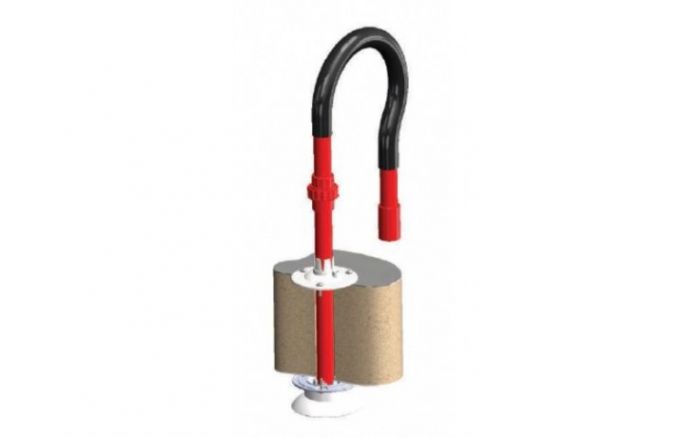Refrigerated Storage Sampling Kit
Code : VSP-860
 Product availability : NSW, ACT, VIC & QLD
Product availability : NSW, ACT, VIC & QLD
- Enables the ASD pipe to be installed, inspected and maintained outside the refrigerated storage facility hence enabling fire contractors to work in ambient conditions
- Suited for facilities with and without ceiling cavities
- Eliminates the need for costly access equipment hire for on-going service/maintenance
- Eliminates the need for heat tracing
- Less prone to blockage due to icing
- Provides a generally more robust ASD installation for these unique environments
The sampling kit consists of outer and inner parts with the sampling pipe penetrating the refrigerated storage sandwich panel. The sampling pipe through the sandwich panel and inner parts are made of ABS plastic which is suitable for low temperatures down to -40ºC. The kit comprises a restriction assembly, placed above the sandwich panel, which consists of a sampling orifice within a socket union.
The Xtralis Refrigerated Storage Sampling Kit provides a standardized method of smoke sampling for refrigerated storage facilities in a considerably improved manner allowing simplified installation with reduced maintenance, thus promoting more reliable and hassle-free operation.
The Xtralis Refrigerated Storage Sampling Kit has been designed to replace standard cone-shaped sampling nozzles installed at the ceiling in existing or new refrigerated storage facilities. This kit can be installed in the entire facility or combined with standard sampling points if required. The aim here is to reduce direct ice blockage of the
sampling points hence this kit is recommended for installation in areas where higher humidity is likely to occur as a result of vehicle and pedestrian traffic (e.g. areas close to doorways or perimeter of the facility).
This kit is treated as a standard sampling hole in the Xtralis ASD system design, in terms of system parameters (e.g. sampling hole location, hole size, transport time, sampling hole sensitivity).

